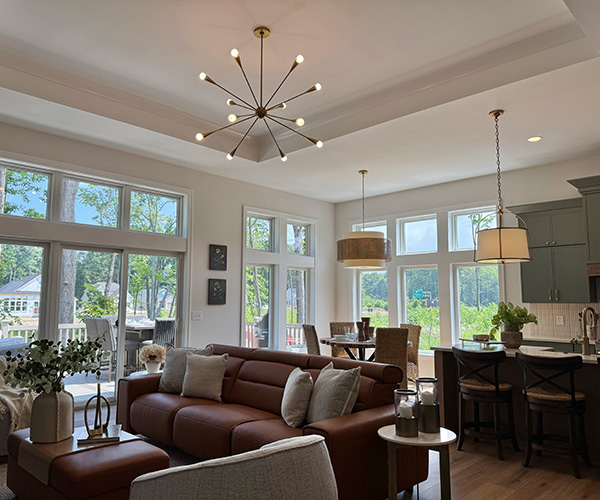Jim and Jennifer Levine's welcome to the kitchen table of their Chagrin Falls home includes a pitcher of fresh-squeezed lemonade, a plate of warm-from-the-oven cookies and a bowl of strawberries grown in their backyard.
"Try a strawberry," Jennifer urges. "We just picked them this morning."
It's the sort of early summer snack people may have enjoyed in this sunny yellow house ever since grocer Charles Wales built it in 1885. Its elaborate Victorian style of architecture was popular throughout Northeast Ohio between 1860 and 1900 among the fashionably affluent as a way to visibly display the money they were making in the region's thriving agricultural, manufacturing and mercantile industries.
Jim was unaware of the residence's architectural and sociological origins when he first laid eyes on it in mid-2009. It sat on a shady lot big enough to accommodate a front yard with a circular gravel driveway and a backyard with a barn-turned-garage.
More importantly, it was in town. The Levines had just sold their 25-acre Hunting Valley spread because they were tired of chauffeuring their 10-year-old son and 8-year-old twin daughters to and from play dates.
"The closest neighbor was half a mile away," Jim says. "Every time we wanted to do something, we had to load everybody up in the car."
Jennifer admits she was skeptical about Jim's big find. It only had three bedrooms; she wanted at least four. She agreed to see it anyway.
"I immediately fell in love with the front porch," she recalls. After a consultation with architect George Clemens, she was as sold on the space as her husband. But the couple insisted that any changes and additions had to be seamless.
"We wanted to maintain the historical nature of the house," Jim says.
Clemens and a team of contractors began turning the house into a home for a family of five. He added a second-floor bedroom with a loft over the family room and back hall. The addition included enough square footage to turn an existing full bath into a spacious Jack-and-Jill counterpart for the kids.
Clemens points out the original eaves that delineate where the outer wall and roof of the house meet the new space.
"It was Jim's idea," he says. "It was hard to preserve — we had to clean it up. There was asphalt on it, shingles on it."
Downstairs, Clemens transformed the tiny L-shaped kitchen by moving the basement stairwell beneath the foyer's steps to the second floor. The move opened up an entire wall for appliances and cabinetry.
When a contractor mistakenly ripped out the original pantry, Clemens ordered a replica rebuilt with doors and hardware salvaged from the demolition.
The octagonal sunroom — a puzzling past addition with five sets of sliding-glass doors but no steps outside any of them — was converted into a family room. Clemens removed the fifth set of sliders to make room for a fireplace with a handsome mantel inspired by the soapstone originals in the parlor and dining room.
"In the long run, everything worked out," Jennifer says. "We're happy — we love our house."
Famous Flourishes
Victorians are known for ornate details that set them apart from other home styles. The Levines made sure to keep these originals intact.
GINGERBREAD TRIM.The Levines had no idea how intricately detailed the original window trims were until they peeked behind the exterior shutters. "We took the shutters off all the windows to expose the Victorian features," Jim says. Similar trim was fashioned for windows in the second-floor addition.
FISH-SCALE SHINGLESRoofers replicated the pattern created in the original slate roof by laying four rows of rectangular shingles, then four rows of a scalloped counterpart. "Even though it's asphalt, it has that same character that slate has," says architect George Clemens.
ORNATE FIREPLACES.The shallow parlor and dining-room fireplaces, carved of soapstone and decorated with floral and geometric inlays of contrasting stones and metals, were designed to burn coal. The Levines opened the long-closed flue in the shared chimney and equipped each fireplace with a gas line and volcanic stone that looks like coal.



